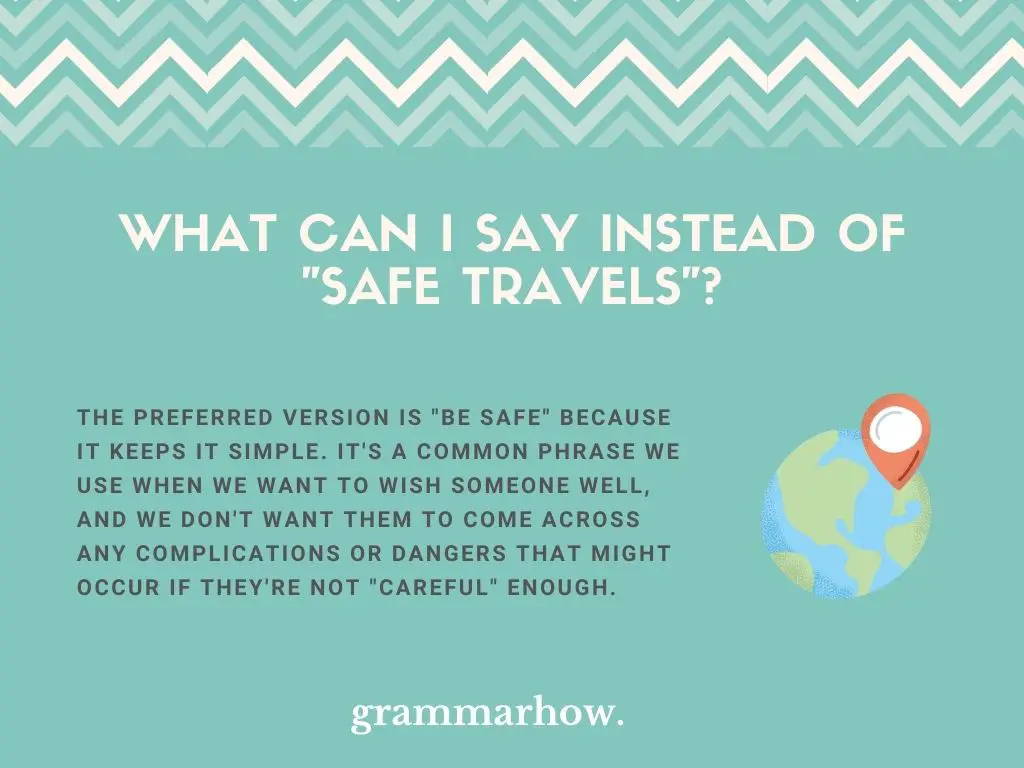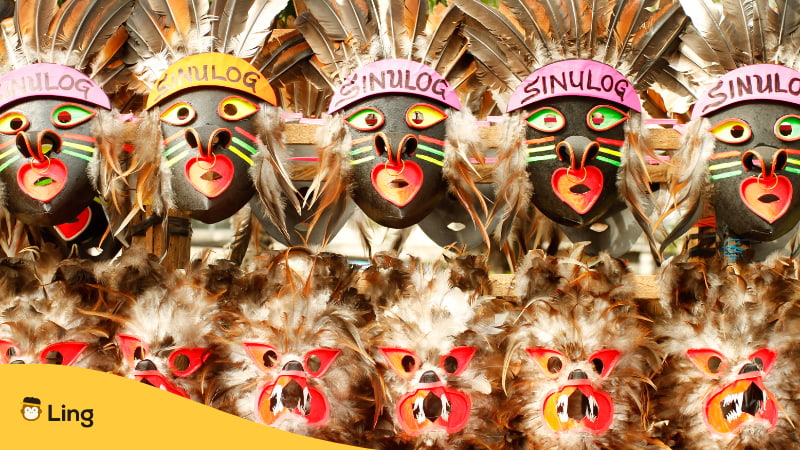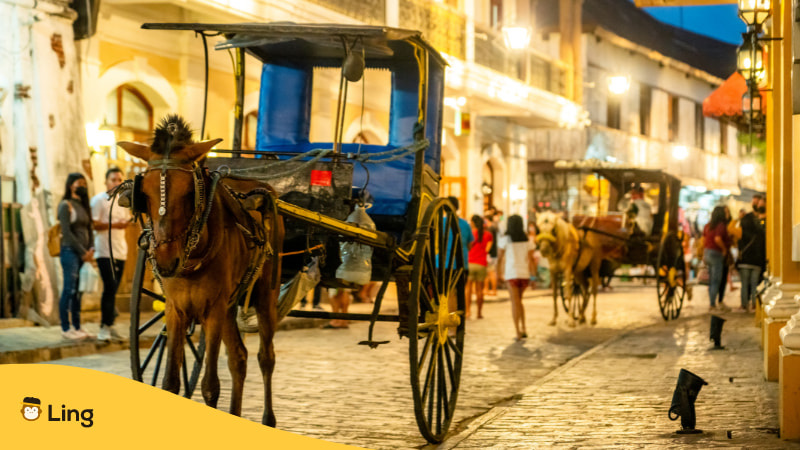

How to say safe travels in Philippines? A Guide For Tourists
Table of Contents
Master Essential Tagalog Phrases for Your Philippine Adventure: From ‘Safe Travels’ to Daily Conversations
How to say “safe travels” and other useful tagalog phrases for travelers.
Exploring the Philippines, with its stunning landscapes, rich history, and vibrant culture, becomes even more rewarding when you can communicate with locals in their language. Tagalog, the basis of the Filipino language, is widely spoken and understood across the archipelago. Here’s a guide to essential Tagalog phrases that will help you navigate your journey, connect with locals, and enrich your travel experience in the Philippines.
1. Safe Travels: “Ligtas na Paglalakbay”
Before you or someone else embarks on a journey, saying “Ligtas na Paglalakbay” conveys your wishes for a safe trip. It’s a heartfelt farewell that shows care and goodwill.
2. Good Morning: “Magandang Umaga”
Greet the day and the people you meet with “Magandang Umaga” . It’s a pleasant way to start any interaction and shows respect for local customs.
3. Thank You: “Salamat”
Gratitude is universal. Saying “Salamat” in appreciation for someone’s help or hospitality is a simple yet powerful way to express your gratitude.
4. Yes/No: “Oo”/”Hindi”
Basic affirmatives and negatives are crucial in any language. “Oo” means yes, and “Hindi” means no, essential responses for simple questions or decisions.
5. How Much Is This?: “Magkano Ito?”
Whether you’re shopping in bustling markets or paying for services, asking “Magkano Ito?” helps you find out the price of items or services.
6. Where Is the Bathroom?: “Nasaan ang Banyo?”
Knowing how to ask for the bathroom, “Nasaan ang Banyo?” is particularly useful in any setting, ensuring you can navigate basic needs comfortably.
7. Can You Help Me?: “Maaari Mo Ba Akong Tulungan?”
If you’re in need of assistance, “Maaari Mo Ba Akong Tulungan?” is a polite way to request help from locals, who are generally known for their hospitality and willingness to assist.
8. I’m Sorry: “Paumanhin”
For moments when you need to apologize or excuse yourself, “Paumanhin” is a respectful way to express regret or excuse yourself.
9. I Don’t Understand: “Hindi Ko Naiintindihan”
When language barriers arise, “Hindi Ko Naiintindihan” lets others know you’re having trouble understanding, often prompting them to help or speak more slowly.
10. Goodbye: “Paalam”
When it’s time to leave, “Paalam” is the word to express your farewells, encapsulating your appreciation for the experience and the hope of returning.
Travel Tips for the Philippines
- Practice Common Phrases : Before your trip, try to get comfortable with these basic Tagalog phrases. Even small efforts at speaking the local language can open doors to richer cultural experiences.
- Be Polite : Filipinos are known for their hospitality and respectfulness. Using polite words like “please” ( “Pakiusap” ) and “excuse me” ( “Makikiraan” ) goes a long way.
- Smile : A smile is universally understood and appreciated. In the Philippines, it’s a powerful tool for friendly communication and is often met with warmth and kindness.
By arming yourself with these Tagalog phrases , you’re not just preparing for a trip; you’re opening up a world of deeper connections and experiences in the Philippines. Whether it’s sharing a “Magandang Umaga” with a local in the morning or expressing “Salamat” to a helpful stranger, these expressions will enrich your journey and create lasting memories of your time in the beautiful Philippine islands.
For More Info : https://travel.state.gov/content/travel.html
Mga Setting
Bilis ng boses, pagsasalin ng text, source text, mga resulta ng pagsasalin, pagsasalin ng dokumento, i-drag at i-drop.

Pagsasalin ng website
Maglagay ng URL
Pagsasalin ng larawan

11 Better Ways To Say “Safe Travels”
“Safe travels” is a polite way to wish somebody well on their upcoming journey. However, there are better ways to be polite and reassuring to your friends when they’re ready to go somewhere (often by plane). This article will share the best alternatives for such a case with you.
What Can I Say Instead Of “Safe Travels”?
There are plenty of ways to use “safe travels” in more exciting manners. You should check out one of the following:
- Have a good flight
- Happy landings
- See you on the other side
- Let me know when you arrive safely
- Stay safe out there
- Enjoy your trip
- Have a relaxing time away
- Happy travels

The preferred version is “be safe” because it keeps it simple. It’s a common phrase we use when we want to wish someone well, and we don’t want them to come across any complications or dangers that might occur if they’re not “careful” enough.
“Be safe” is great to show we care about someone. It lets them know that we worry about them, and we want them to stay “safe” no matter what happens. It works regardless of the method of transport for the journey as well, which makes it a good general phrase.
It’s common for family members to use the phrase “ be safe ” when seeing each other off. This shows that there is a lot of love behind the phrase and that it works well to show how much you care about someone’s wellbeing.
Here are a few ways we might be able to use this phrase:
- Be safe out there. I know you like to find trouble, but for once, I’d love it if you looked after yourself!
- Be safe on your way out! I would love to hear from you and see the pictures of all the things you get up to.
- Don’t forget to message me when you get there! Be safe, and I love you!
“Safe trip” is a simple phrase we can use to make sure someone knows we care. Using words like “safe” reminds people that we worry about them. Even if we are not physically there with them, we hope they are “safe” and do not get into trouble.
This phrase works well regardless of the trip that someone is taking. It could be a long-distance or a short-distance trip. Likewise, it could be by car, plane, boat, or something else entirely!
This phrase works in the following situations:
- Safe trip, Yuri! I’ll miss you, but I know you’ll be thinking about me while you’re away.
- Safe trip back to your hometown, then. Let me know when you get there safely.
- Safe trip, old friend. I’ll see you again whenever you’re next in town!
Have A Good Flight
“Have a good flight” is appropriate to use when someone is going to get on a plane . We use “flight” here to be specific, which helps us to show that we know what someone is getting up to and what they’re likely going to expect from their journey.
We can use this phrase in the following ways:
- Have a good flight! I’m sure you can get all the food and drink you want on there!
- Have a good flight, and don’t forget to let me know when you land safely!
- Have a good flight! There’s nothing to worry about, and you know it’ll all be okay!
Happy Landings
“Happy landings” specifically highlights the “landing” portion of a journey. It works well when someone is going on a plane, and we want them to be “happy” throughout the course of their journey.
Here are a few useful examples of how this one works:
- Happy landings, fella! Don’t forget that they really like their tips out there when you’re dining out!
- Happy landings, then! I’ll miss you every second, so I want you to send me all the photos you can!
- Happy landings! Don’t forget to explore some of the local scenery!
See You On The Other Side
“See you on the other side” is an informal idiom that works well in many cases. We can do it when we know that someone will be returning to see us again soon. “The other side” indicates the place where we will be staying while they go on a journey.
Check out some of these examples to see how it looks:
- See you on the other side, then! Have a great holiday!
- Have a great time away, Fred! See you on the other side!
- I’ll be here waiting for you as always! See you on the other side!
Let Me Know When You Arrive Safely
“Let me know when you arrive safely” is a calm way to let someone know that you are worried. When they arrive at their destination, we can ask them to “message” us to ease our minds and show us that they are thinking about us even after their journey.
We could also use a phrase like “text me when” instead of “let me know when.” If we want to be more specific about the manner of messaging, this phrase works just as well.
This phrase works well in the following ways:
- Let me know when you arrive safely, please! You know how much I worry about you while I’m not around!
- Text me when you arrive safely, please! I want to know just how much fun you’re getting up to.
- Let me know when you arrive safely! I’ll miss you every second that you’re away.
Stay Safe Out There
“Stay safe out there” is a good way to show that you care about someone. “Stay safe” helps to let them know that you’ll be looking out for them and that you want them to explore, but in a reasonable way that won’t cause them harm.
We typically use this phrase when someone is going on a long-distance journey. “Out there” is a good indicator of that.
Check out some of these examples to see how it works:
- Stay safe out there, then! I know you’ll make all the best choices while you’re away.
- Stay safe out there! I’ll miss you, but I know you’ll be having an absolutely adoring time!
- Stay safe out there. You never know what hijinx you might get into, so make sure you text me!
Enjoy Your Trip
“Enjoy your trip” is a simple way to show someone that you care. It helps to let them know that we want them to “enjoy” themselves. While trips can sometimes be boring (especially long-distance ones), we want people to feel like they can still have fun.
This simple phrase works as follows :
- Enjoy your trip, Michael! Let me know when you arrive so we can discuss the adventure more!
- Enjoy your trip! Don’t forget to immerse yourself in the local culture when you get there!
- Enjoy your trip! I expect you to be fluent in German by the time you get back, okay?
Have A Relaxing Time Away
“Have a relaxing time away” works well in many cases. It’s most effective when we know that someone is inclined to worry (whether about the journey or the place they’re going). If we want to calm them down, this phrase works well.
These examples will help you make more sense of it:
- Have a relaxing time away! Remember, you don’t need to worry about a thing when you get on that plane!
- Have a relaxing time away! If anyone deserves it, it is most certainly you!
- Have a relaxing time away! I’m going to miss you, but I know you’ll be back in no time!
Happy Travels
“Happy travels” works really well when we want people to feel “happy” on their journey. “Travels” can refer to any method of transport, but the idea is that they’ll be spending a long time getting from point A to point B, and we want them to feel “happy.”
Perhaps one of these examples will help you make more sense of it:
- Happy travels, mate! I know you’ll love it over there in Australia, but you must tell me all about it.
- Happy travels, Sue! I’ll miss you, so don’t forget to write to me every day about what you do.
- Happy travels, Dan! Thank you for coming to see me again, and I’ll see you again soon, yeah?
“Bon voyage” is a great way to wish someone well before they go on an adventure. It’s French (and Italian), and it means “good journey.” It’s a commonly-used exclamation in English when we want to wish somebody well for something they’re going to do.
It’s also comforting because it shows that we do not wish any problems to come their way when they’re on their journey.
- Bon voyage, my little friend! I’ll see you again when you return!
- Bon voyage, then! I will miss you, but I hope you get a chance to text me a bunch when you get there!
- Bon voyage! I love you so much, and I’ll definitely miss you while you’re away.
You may also like: Safe Travels – Meaning & Usage (Helpful Examples)

Martin holds a Master’s degree in Finance and International Business. He has six years of experience in professional communication with clients, executives, and colleagues. Furthermore, he has teaching experience from Aarhus University. Martin has been featured as an expert in communication and teaching on Forbes and Shopify. Read more about Martin here .
- “Arrive To”, “Arrive At”, or “Arrive In”? Correct Preposition
- “Made It Home Safe” vs. “Made It Home Safely” – Correct Version
- Be Safe, Stay Safe, or Keep Safe? [Helpful Examples]
- Will Arrive or Will Be Arriving – What’s the Difference?


- Constructed scripts
- Multilingual Pages
Bon voyage / have a good journey in many languages
Jump to phrases
How to wish people a good or safe journey. The phrase, bon voyage, is used in English without change, though the pronunciation is quite like the French.
People who have contributed to this section
If you would like to make any corrections or additions to this page, or if you can provide recordings, please contact me .
http://www.nypl.org/branch/central/dlc/df/expressions/bonvoyage.html
Other phrases
Welcome | Hello | How are you? | Long time no see | What's your name? | Where are you from? | Pleased to meet you | Good morning | Good afternoon | Good evening | Good night | Goodbye | Good luck | Cheers! | Have a nice day | Have a nice weekend | Bon appetit | Bon voyage | Yes, No | Maybe | I don't know | Do you understand? | I understand | I don't understand | Please speak more slowly | Please say that again | Please write it down | Do you speak English? | Do you speak [your language]? | I'm learning [your language] | How do you say ... in [your language]? | Speak to me in [your language] | Excuse me | I would like ... | How much is this? | Sorry | Please | Thank you | Where's the toilet? | This gentleman/lady will pay for everything | Would you like to dance? | Do you come here often? | I miss you | I love you | Get well soon | Go away! | Leave me alone! | Help! | Fire! | Stop! | Call the police! | Merry Christmas | Happy New Year | Happy Easter | Happy Birthday | Congratulations | One language is never enough | My hovercraft is full of eels
728x90 (Best VPN)
Why not share this page:

If you like this site and find it useful, you can support it by making a donation via PayPal or Patreon , or by contributing in other ways . Omniglot is how I make my living.
Get a 30-day Free Trial of Amazon Prime (UK)

- Learn languages quickly
- One-to-one Chinese lessons
- Learn languages with Varsity Tutors
- Green Web Hosting
- Daily bite-size stories in Mandarin
- EnglishScore Tutors
- English Like a Native
- Learn French Online
- Learn languages with MosaLingua
- Learn languages with Ling
- Find Visa information for all countries
- Writing systems
- Con-scripts
- Useful phrases
- Language learning
- Multilingual pages
- Advertising

Best List of 500 Common Tagalog Phrases for Travel
- , April 26, 2024

With beautiful beaches, unique history, and remarkable people, millions of tourists all over the world have included the Philippines as a must-visit destination in Asia. Aside from its strategic location and unique culture tied to other countries, which makes it a perfect destination is its native community. You see, Filipinos may seem shy, but they are actually one of the most fluent English speakers in the world. But, to make your adventure even more exciting, why not try to dazzle the locals with your superb Tagalog speaking skills?
You know, there is much more beyond mahal kita or “ paalam .” To get you started, we have put together a solid list of about 500 words featuring the common Tagalog phrases for travel that you need to learn as you immerse yourself in the culture and its people. Additionally, as you learn Tagalog through this article, you will also explore a brief overview of the country’s history, culture, and language.

What Are Some Tagalog Phrases for Travel?
Start with the list of 50 useful words and phrases in Tagalog:
- Kamusta – Hi/Hello!
- Kamusta ka? – How are you?
- Patawad – I’m sorry.
- Ipagpaumanhin nyo po. – Excuse me.
- Paalam, (Sa muling pagkikita.) – Goodbye (see you).
- Ano ang pangalan mo? – What’s your name?
- Ang pangalan ko ay. – My name is…
- Mayroon akong isang kapatid na lalaki. – I have one younger brother.
- Ako ay nag tatrabaho sa … – I work at…
- Ikinagagalak kitang makilala. – Nice to meet you.
- Katapusan ng linggo – Weekend
- Umaga – Morning
- Gabi – Night
- Anong oras na ngayon? – What time is it?
- (time) …na. – It’s… (time).
- Ano? – What?
- Sino? – Who?
- Magkano? – How much?
- Ako ay nagugutom. – I’m hungry.
- Nakapag reserba na ako ng lamesa. – I’ve already reserved a table.
- Gusto kong umorder ng… – I would like to order…
- Maaari ko bang makuha ang bayarin? – May I have the bill?
- Saan ang pamilihan? – Where’s a shopping center?
- Gusto kong bumili ng… – I would like to buy…
- Magkano ito? – How much is it?
- Gusto ko itong ibalik. – I would like to return this.
- Pwede mo ba akong bigyan ng discount. – Can you give a discount?
- Dumiretso – Go straight
- Liko sa kaliwa / kanan – Turn left / right
- Malayo – Far away
- Dito – Here
- Sunod sa – Next to
- Saan ang Istasyon ng tren? – Where is the train station?
- Saan ako makakabili ng Ticket? – Where can I buy a ticket?
- Magkano ang ticket na ito? – How much is this ticket?
- Saan ang banyo? – Where is the restroon?
- Nasaan tayo? – Where are we?
- Tulong! – Help
- Naiwala ko ang walet ko. – I lost my wallet.
- Gusto ko pumunta sa pulisya. – I want to go to the police office.
- Masama ang pakiramdam ko. – I feel sick.
- Pakitawagan ang doktor. – Please call the doctor.
- Hindi ako hiyang sa… – I’m allergic to…
- Ambulansya – Ambulance
- Sakit ng ulo – Headache
- Gusto ko magpa reserba. – I’d like to make reservation.
- Kasama ba ang Almusal? – Is breakfast inclued?
- Paano ako makakarating sa Hotel? – How can I get to the hotle?
- Gusto ko ng nag iisang kwarto. – I want a single room.
- Nakalimutan ko ang susi ng kwarto. – I forgot the room key.
Before going through the next list of words and phrases, you should also have a language learning app that you can practice vocabulary with from time to time. The perfect solution is Ling , where you’ll not just get 200+ lessons to improve your language skills, but you’ll also have an AI chatbot and grammar lessons to review. It’s the perfect package in one single app. Especially, if you’re trying to communicate with your Filipino loved one or just want to reach out to potential friends or business partners.
Download the Ling app on the Play Store or App Store now!
How Do You Say I Want To Travel To The Philippines?
Greetings In Tagalog
Basic conversation in tagalog, numbers in tagalog.

Time and Date In Tagalog
Questions in tagalog, eating out/dining out in tagalog, tagalog shopping vocabulary, tagalog direction words, direction phrases in tagalog, emergency words and phrases in tagalog, health vocabulary in tagalog, tagalog words when sightseeing, accommodation words and phrases in tagalog, food and drink in tagalog, fruits in tagalog.

Frequently Asked Questions For Tagalog Phrases For Travel
What is a typical filipino phrase, what is the meaning of mabuhay.
Mabuhay, which also means long live, is a traditional Filipino greeting that was used to celebrate victory or as a chant by the Filipino revolutionaries. However, it is now commonly used to greet foreigners. But, it can still be used as a way to celebrate an achievement in your life or a successful event.
How do you use this word in a Tagalog sentence?
For example:
What Is The Philippines Current Tourism Slogan?
The 2024 Philippine Tourism Slogan is Love The Philippines. This slogan is changed yearly by the Department of the Philippines.
If you want to know more about the culture, history, and Tagalog language, we have more information for you!
History of the Philippines and the Tagalog Language
Despite the country’s turbulent history, Filipinos still managed to become one of the friendliest and warmest people in Asia. Aside from being a travel destination because of its food and beautiful beaches, the Philippine archipelago also attracts tourists through its colorful history.
Before its discovery by the Spanish empire, the country was populated by rival tribes, which all had distinct traditions, gods, and datu (chieftains or rulers). Unfortunately, earlier records regarding their culture were destroyed as the Spaniards colonized the country. With the land ruled by Spanish governors for more than 300 years, Filipinos were able to adopt its language, religion, customs, and even naming traditions.
Additionally, countries like the United States and Japan have also targeted the country due to its tactical position. It has become one of the major maritime trade routes, which is why the locals are well-versed in different languages and are familiar with other countries’ traditions.
As the way of living changed over time, the Philippines’ language has also been under consistent development. While Tagalog is considered the official language, you may be surprised to know that there are also about 170 regional dialects. Some of the examples are Cebuano, Chavacano, Waray, and Hiligaynon.

Culture of the Philippines
The country’s unique yet diverse culture is deeply rooted in the customs and traditions of its foreign colonizers and its neighboring countries. Due to its strategic location and a humble number of islands, history proves that the Philippines has always been part of the trade route of other nationalities such as Malays, Arabs, Chinese, and even Westerners. And since it is often visited, the locals have grown to love, learn, and ultimately adopt the cultures, dialects, cuisine, and even languages of these foreign visitors.
For instance, scattered all over the country are different religious monuments, mosques, and shrines in the hopes of catering to the varied religious communities existing in the country. While it is true that most of the Filipinos are baptized as Catholics, there are still a considerable number of people who come from different religions. The country and the government fully recognize this by proclaiming specific holidays for each!
Despite having an intense blend of traditions, Filipinos developed distinct qualities that set them apart. For instance, even today, the locals (along with their extended families) still put a premium on joining community festivals as this is an opportunity for them to show appreciation towards music, fashion and art, food, and religion.
What Is The Tagalog Language?
You might be wondering why the Philippines does not seem to have its own writing system, unlike other Asian countries. Well, to be honest, the country has its old writing system called “Baybayin.” While the origins of Baybayin are still unclear even today, it can be noted that the script is influenced by Proto-Sinaitic script. This 14th-century writing was rampantly used in Luzon back in the 16th -17th century, but it has somehow lost its popularity as the locals learned about the English.
Note : In 2018, the Baybayin is slowly being revived by the country, so some of the busiest places in Manila are adapting Baybayin translations in government signages. As a tourist, you do not have to worry since about 90% of signage are still in English.

Tagalog Language Structure
Ready to speak Tagalog? To navigate the Philippines like a pro, allow us to share with you the basics, such as the Tagalog alphabet and sentence structure.
Tagalog Alphabet
What makes Tagalog an easy language to learn is that its alphabet is reasonably easy to memorize. Each letter is called titik or letra , and each of them represents a spoken sound that is directly similar to the English alphabet. The modern Filipino alphabet holds over 28 letters: a 26-letter set from the Latin alphabet, one special Spanish “Ñ” ( /ɲ/ or sounded as “enye”), and the Tagalog digraph “Ng” ( /ŋ/ as the “ng” in words like “sing,” “length,” and “thing”).
Tagalog Sentences
Compared to English, the Tagalog sentence stricture can be deemed as somewhat flexible. To form basic sentences in the Tagalog language, you may use the structure “Adjective +Subject/Pronoun.” For instance, you may simply say Maganda si Beng , which is literally translated as “Beautiful is Beng.” Another example is Naiinitan ako , which literally translates to “Feeling hot me.”
Of course, you may also use the classic SVO agreement to make sentences like Ako ay pagod , which means “I am tired” in English.
Tips to Learn Tagalog Fast
Learning any language entails that one must put effort and set aside time to actually read, write, listen, and converse using the target language. Scientifically, it is found that if you will set aside time and immerse yourself in the language, you are trying to learn (may it be through music, movies, or apps) every single day, then there is a huge chance that you will become proficient in no time. To speed things us as you learn Tagalog, we listed three major tips below:
- Focus on vocabulary. Language proficiency is highly dependent on strong vocabulary size. It plays a significant role as words and phrases alone can help build context, which can significantly assist in analyzing what is being said.
- Play Tagalog music . Not only is this a great tool for immersing oneself in the vocabulary words, Tagalog slang, and phrases, but it also helps in giving you an idea about the Philippines’ culture and traditions.
- Use mobile apps . Unlock the Tagalog language by consistently allowing yourself to learn systematically through dedicated language apps and websites.
Best Apps for Learning Tagalog While Traveling in the Philippines
For learning the Tagalog language, you may find it easier to use the applications below since they all offer distinct multimedia experiences depending on your needs. Our app recommendations are all available to use, whether your device is an Android or an iOS.
With the concept of gamification, the Ling app makes a great companion for both beginners and experts. You see, it is packed with exciting challenges, dialogues, and systematic quizzes that can help strengthen your knowledge in areas such as grammar, pronunciation, and memorization of words and phrases.
Simply Learn
This Simply Learn application is basically a phrasebook that contains native voice samples, learning techniques, and pronunciation tips. This can be your go-to app for checking whether you are saying the words and phrases in the right manner.
Vocly is mainly focused on enhancing your vocabulary in Tagalog. Through a mixture of multimedia elements, users will be able to have fun and engaging learning sessions through mini-games.
Write Me mainly targets to improve your writing prowess in the Tagalog language. It can greatly help beginners recognize and write on their own each of the characters in the target language.
500 Common Tagalog Phrases for Travel (Infographic)

Leave a Reply Cancel reply
You must be logged in to post a comment.
Discover more

People also read

Religion In Laos 101: An Easy Introduction For You

10 Beautiful Lao Words We Wished Existed In English

10+ Cool Lao Words That Mean Power

Lao People: #1 Guide To The Amazing History Of Laos

13+ Easy Transition Phrases In Lao: A Beginner’s Guide

The Riveting History Of Lao Language: Your #1 Guide
Southeast asia, east europe.
© 2024 Simya Solutions Ltd.
Translator for
Lingvanex - your universal translation app, translation meaning & definition of the word "safe" into tagalog language, kahulugan ng pagsasalin at kahulugan ng salitang "ligtas" sa wikang tagalog, examples of using, lingvanex products for translation of text, images, voice, documents:, language translation.
Pagsasalin ng "safe" sa Tagalog
Ang ligtas, kaha, tiwasay ay ang nangungunang mga pagsasalin ng "safe" sa Tagalog. Halimbawang isinaling pangungusap: He concealed the file in what he thought was a safe place. ↔ Tinago niya ang file sa inaakala niyang ligtas na lugar.
Not in danger; free from harm's reach. [..]
Ingles - diksyonaryo Tagalog
not in danger
He concealed the file in what he thought was a safe place.
Tinago niya ang file sa inaakala niyang ligtas na lugar.
I put the money into the safe .
Nilagay ko ang pera sa kaha de yero.
Hindi gaanong madalas na pagsasalin
- katiwasayan
- Kahang bakal
Ipakita ang mga pagsasalin na ginawa sa algorithm
Mga awtomatikong pagsasalin ng " safe " sa Tagalog
Mga pagsasalin na may alternatibong spelling
"Safe" sa Ingles - Tagalog na diksyunaryo
Sa kasalukuyan ay wala kaming mga pagsasalin para sa Safe sa diksyunaryo, marahil ay maaari kang magdagdag ng isa? Tiyaking suriin ang awtomatikong pagsasalin, memorya ng pagsasalin o hindi direktang pagsasalin.
"SAFE" sa Ingles - Tagalog na diksyunaryo
Sa kasalukuyan ay wala kaming mga pagsasalin para sa SAFE sa diksyunaryo, marahil ay maaari kang magdagdag ng isa? Tiyaking suriin ang awtomatikong pagsasalin, memorya ng pagsasalin o hindi direktang pagsasalin.
Mga larawang may "safe"
Mga pariralang katulad ng "safe" na may mga pagsasalin sa tagalog.
- Safe Senders List Listahan ng Ligtas na Magpapadala
- safely ligtas
- Safed Safed
- safe sex Ligtas na pagtatalik
- Safe Recipients List Listahan ng Ligtas na Tatanggap
- safe list collection koleksyon ng ligtas na listahan
- You're safe here. Ikaw ay ligtas dito.
Mga pagsasalin ng "safe" sa Tagalog sa konteksto, translation memory
What is "Journey" in Tagalog and how to say it?
Learn the word in this minigame:, more i will study abroad vocabulary in tagalog, example sentences, how to say "journey" in 45 languages., other interesting topics in tagalog, ready to learn tagalog, language drops is a fun, visual language learning app. learn tagalog free today..
- Drops for Business
- Visual Dictionary (Word Drops)
- Recommended Resources
- Redeem Gift
- Join Our Translator Team
- Help and FAQ
Drops Courses
Tagalog-Dictionary.com
Meaning of "safety", safety •.
- a being safe, freedom from harm or danger: kaligtasan, pagkaligtas
- bringing no harm or danger: di makapipinsala, walang peligro, walang panganib
» synonyms and related words:
- extra space at the side, time, money, etc., more than needed, margin of safety: pataan, pasobra, palabis
- 1. a short, slender piece of wire with a point at one end and a head at the other for fastening things together: aspili, ispili
- 2. a decorative pin: alpiler
- 3. a badge with a pin or clasp to fasten it to the clothing: tsapa
- 4. anything that fastens: ipit
- 5. hair pin: panuksok, ipit sa buhok
- 6. a safety pin: imperdible, perdible
- 7. a peg made of wood or metal: talasok
- 8. a bowling pin: bulilyo
- 1. to fasten with a pin, to put a pin through: mag-aspili, aspilihan, iaspili
- 2. to hold fast in one position: umipit, mag-ipit, ipitin, dumagan, magdagan, daganan
- 3. on pins and needles (very anxious and uneasy): hindi mapalagay, balisa
- pin, brooch, safety pin
- lumulon, lulunin (-um-:in) to swallow. Lumulon siya ng buto ng santol. He swallowed the seed of the santol.
- malulon (ma-) to swallow (accidentally). Nalulon ng bata ang imperdible. The child swallowed a safety pin. maglulon, lulunin, ilulon (mag-:in, i-)
- to roll up as paper money, mat or the like. Ilulon mo ang banig. Roll up the mat.
Improve your Filipino vocabulary
Articles & essays.
- Morong Majesty
- Balut Making
- Palawan's Little Saigon
- The Filipino and The Salacot
- Barong Tagalog
Filipino Food
- Fermented Rice
- In Praise of Suman Past
- Sisig na Sisig
- Tinapa - Smoked Fish
- Biscocho Pasuquin
- Panecillos de San Nicolas
Native Games
- Sungka | Sipa
- Agawan Base
- Tumbang Preso
- Chinese Garter
- Marbles (Holen)
- Hide and Seek (Taguan)
Spread the word
- Idioms / Mga Sawikain
- Proverbs / Mga Salawikain
- Essays / Stories
- Filipino Folk Songs
- Online Games
- Holloween All Souls Day Saints
- Christmas in the Philippines
- New Year's Eve in the Philippines
- Palm Sunday's Palaspas
- Filipino Legends
Festivals & Events
- Araquio Festival
- Ati-atihan Festival
- Giant Lantern Festival
- Hot Air Balloon
- Flores de Mayo - Flowers of May
- Mardi Gras The Philippine Style
Filipino Sites
- Buy and Sell Philippines
- Filipino Freelancers

Definition of " safety " word Copyright © 2003 - 2016 Tagalog English Dictionary | Manila Philippines. All rights reserved.
bottom_desktop desktop:[300x250]
Voyage in Tagalog
What is the translation of word Voyage in Tagalog/Filipino ?
Meaning of Voyage in Tagalog is : paglalayag
Defenition of word voyage.
- a long journey involving travel by sea or in space.
- go on a long journey, typically by sea or in space.
Other meanings of Voyage
a six-year voyage to Jupiter
Recent Searched Words

IMAGES
COMMENTS
Unlock your travel experience in the Philippines with essential Tagalog phrases. Learn how to say 'safe travels,' thank you, and more to connect with locals and navigate your journey with ease. This guide covers everything you need for a rich and respectful cultural experience.
Google Translate offers free instant translation of words, phrases, and web pages between English and over 100 other languages.
"Safe travels" is a polite way to wish somebody well on their upcoming journey. However, there are better ways to be polite and reassuring to your friends when they're ready to go somewhere (often by plane). This article will share the best alternatives for such a case with you. What Can I Say Instead Of … 11 Better Ways To Say "Safe Travels" Read More »
Basic travel phrases in Tagalog. Useful travel words and phrases in Filipino, the national language of the Philippines.
Our Lady of Peace and Good Voyage (Spanish: ... His safe voyage across the Pacific Ocean was attributed to the image, ... The beliefs and traditions conducted through Our Lady of Antipolo are of animist origins and are connected with the Tagalog male boatman sea god Maguayen, which was originally a Visayan deity, known to be a god and a goddess ...
Bon voyage / have a good journey in many languages. Jump to phrases. How to wish people a good or safe journey. The phrase, bon voyage, is used in English without change, though the pronunciation is quite like the French.
What Are Some Tagalog Phrases for Travel? Start with the list of 50 useful words and phrases in Tagalog: Kamusta - Hi/Hello! Kamusta ka? - How are you?
Check 'voyage' translations into Tagalog. Look through examples of voyage translation in sentences, listen to pronunciation and learn grammar.
Need to translate "safe travels" to Filipino? Here's how you say it.
Meaning of "safe" safe •. adj. 1. free from harm or danger: ligtas ; 2. not causing harm or danger: walang peligro, hindi delikado, walang panganib, matibay
Homepage | Tagalog.com
BON VOYAGE. This is a French phrase. It can be transliterated into Tagalog as bon boyáds. "mabuting biyahe". "nice trip". You say ' Bon voyage ' to someone who is going on a journey, as a way of saying goodbye. Bon Voyage is also the title of a 1958 Filipino film starring Fernando Poe Jr.
Safe in Tagalog The best Filipino / Tagalog translation for the English word safe.
Translate the word 'safe' from English to Tagalog and discover its meaning, usage in sentences, and synonyms. 'Safe', is explained through detailed examples and definitions in both English and Tagalog. Use the Lingvanex dictionary to enhance your language skills.
Pagsasalin ng "safe" sa Tagalog. Ang ligtas, kaha, tiwasay ay ang nangungunang mga pagsasalin ng "safe" sa Tagalog. Halimbawang isinaling pangungusap: He concealed the file in what he thought was a safe place. ↔ Tinago niya ang file sa inaakala niyang ligtas na lugar. safe adjective noun gramatika. Not in danger; free from harm's reach.
Learn the word for "Journey" and other related vocabulary in Tagalog so that you can talk about I Will Study Abroad with confidence.
The English word "voyager" can be translated as the following word in Tagalog: 1.) manlalakb á y - [noun] traveler; traveller; voyager; wayfarer more... Click a Filipino word above to get audio, example sentences and further details for that word.
Meaning of "safety" safety •. n. a being safe, freedom from harm or danger: kaligtasan, pagkaligtas ; adj. bringing no harm or danger: di makapipinsala, walang peligro, walang panganib
Filipino words for safe include ligtas, kahang bakal, sa kaligtasan, sigurado, walang panganib, maingat, matibay, hindi delikado, kaha and maaasahan. Find more Filipino words at wordhippo.com!
Voyage in Tagalog. Voyage Meaning in Tagalog. What is the meaning of Voyage in Tagalog? Find Pronunciation, Examples, Synonyms and Similar words for Voyage in Tagalog.
The best Filipino / Tagalog translation for the English word safe haven. 1.) rep ú hiy ó - refuge; a place that provides shelter or offers protection; sanctuary; haven; asylum; shelter; safe haven; retreat; more... Click a Filipino word above to get audio, example sentences and further details for that word. Join us!
Check 'safely' translations into Tagalog. Look through examples of safely translation in sentences, listen to pronunciation and learn grammar.